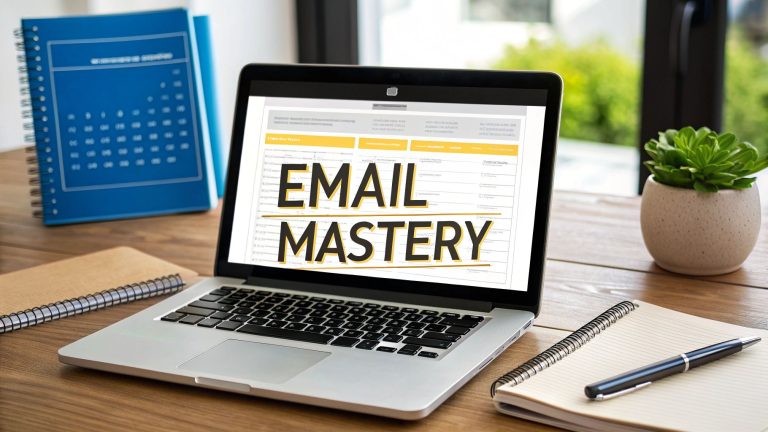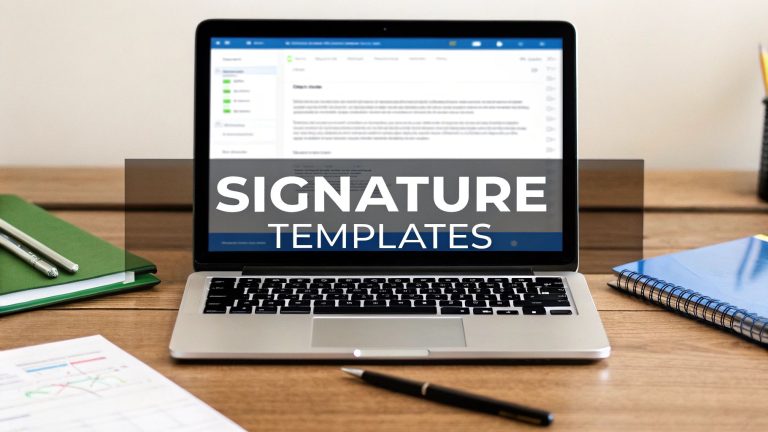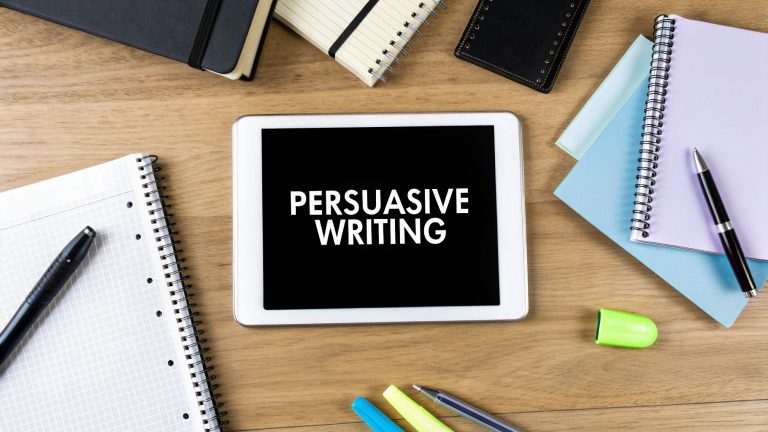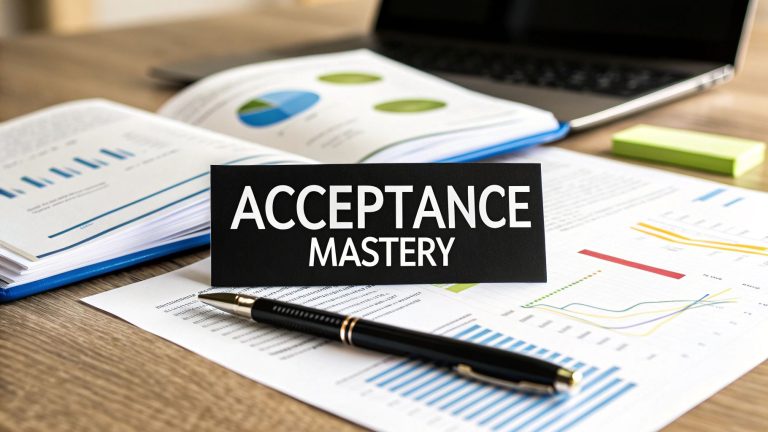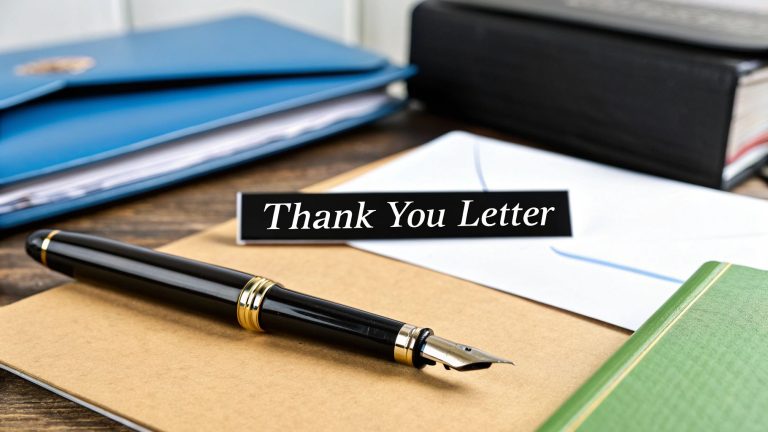Basics of Letter Writing
Grasping the essentials of letter writing can seriously dial up your game. Let’s dig into why putting pen to paper (or fingers to keyboard) still matters these days and what makes up a killer letter.
Importance of Letter Writing
Believe it or not, letters still hold their own in our tech-obsessed lives. The New York Post mentions that about 65% of folks are keeping mail alive with letters and packages sent monthly. There’s something about a letter that sticks around, so knowing how to write one is key.
Writing letters helps you:
- Connect on a personal level.
- Leave a formal paper trail.
- Boost your professional image.
- Make your tone and intent crystal clear.
Elements of a Letter
Each part of a letter serves a purpose to make sure your message gets across right. Get a handle on these parts, and you’re halfway there.
- Date: Write out the date in full, like ‘November 30, 2022.’ It usually goes in the upper right corner if you’re jotting it down by hand (WikiHow).
- Sender’s Address: This goes near the top. Make sure it’s up-to-date.
- Recipient’s Address: Follows the sender’s address and has to be spot on.
- Salutation: The greeting that kicks things off. Something like ‘Dear Mr. Smith,’ will do.
- Body: This is where you spill the beans. Keep it clear and to the point.
- Closing: A polite send-off like ‘Sincerely,’ and leave space for your name.
- Signature: Try for a handwritten signature below the closing if you can.
Here’s how the parts stack up:
| Element | Where It Goes |
|---|---|
| Date | Upper right corner |
| Sender’s Address | Top, above receiver details |
| Recipient’s Address | Following sender’s address |
| Salutation | Just above the body of the letter |
| Body | Packs all the details you need |
| Closing | Below the main text |
| Signature | Underneath the closing line |
Getting these bits and pieces right makes sure your letter looks sharp and says what you need it to.
Making Your Letter Look Sharp
Nailing the look of your letter is essential to leave a solid impression. Get it right, and your message will be clear and professional. Let’s dive into the nitty-gritty of how to dress up your letter: getting the date, the recipient’s details, and the standard setup just right.
Date: Where It Belongs
Putting the date in the right spot tells your reader when the letter was penned. If you’re doing it old-school and writing by hand, spell out the date like so: ‘November 30, 2022.’ For the techno-savvy among us, here’s how to format it on your computer:
1. Block Style:
- Slap the date two inches from the top, aligned to the left.
2. Modified Block Style:
- Nestle the date under the sender’s address, more or less in the center.
3. Indented Style:
- Get the date hovering a tad to the right, similar to the modified block style.
Getting the Recipient’s Info Right
Sending your letter to the right person? Don’t trip up here:
1. Recipient’s Details:
- Full Name
- Street Address
- City, State, and Zip
2. Sender’s Details:
- Chuck the sender’s address up top, just above the date if there’s no letterhead.
- Skip the sender’s name and title here—they’ll sign off below.
Here’s a quick glance at how it might look:
| Element | Example |
|---|---|
| Sender’s Address | 1234 Elm Street |
| Springfield, IL 62704 | |
| Date | November 30, 2022 |
| Recipient’s Address | Ms. Jane Doe |
| 5678 Oak Avenue | |
| Metropolis, NY 10001 |
The Standard Layout
Arranging your letter all nice and tidy ensures it’s easy to read and follow. For business letters, block them like this:
- Keep everything hugging the left.
- Single-space your text, with double spaces separating paragraphs.
A quick comparison of layout styles:
| Style Feature | Block | Modified Block | Indented |
|---|---|---|---|
| Alignment | Left-flushed | Date and sign-center | Indented paragraphs |
| Spacing | Single-spacing | As block style | Double-spacing for paragraphs |
| Paragraphs | Double space between | As block style | Indented |
Crafting your letter with care shows professionalism and clear intent. Whether the occasion is business or just catching up with friends, these tips will help express your thoughts smoothly and effectively.
Types of Formal Letters
Knowing the different types of formal letters is crucial when you’re getting the hang of how to properly put one together. Each type has its own purpose and sticks to certain rules so your message gets across loud and clear. Let’s break down business correspondence and professional communication letters.
Business Correspondence
Business correspondence is all about letters exchanged between folks like organizations, employees, stakeholders, or clients. These letters roll out on the formal carpet, sticking to strict guidelines to stay professional. Some common types of business correspondence are:
- Cover Letters: A quick intro to you and your resume when chatting with potential bosses.
- Business Inquiries: A shout out for info on products, services, or company details.
- Complaint Letters: Raising an eyebrow at issues with the products or services.
- Order Letters: Putting in requests for stuff or services.
When piecing together a business letter, keep these elements in mind:
| Element | What’s It About? |
|---|---|
| Header | Your name, title, company, and how to get ahold of you |
| Date | Usually chillin’ at the top of the letter |
| Recipient’s Information | Full name, title, company, and where they’re at |
| Salutation | Go with formal greetings like “Dear Mr./Ms. [Last Name]” |
| Body | Short, sweet paragraphs that stick to the point |
| Closing | Wrap it up with a professional goodbye like “Sincerely” or “Best regards” |
| Signature | Your name in ink or typed, with your printed name afterward |
It’s always best to aim for a specific person with your letter. If their name slips your mind, address it to the right department or go with “To Whom It May Concern” (Preply).
Professional Communication
Professional communication letters are for the in-crowd, used among employees, teams, or departments within the same company. They stick to a formal tone but let their hair down a bit compared to full-on business correspondence. These can include:
- Recommendation Letters: Lending some good words for colleagues or teammates.
- Appreciation Letters: Giving a shoutout for contributions or wins.
- Resignation Letters: Letting your boss know you’re heading out.
- Internal Memos: Sharing the 411 or updates within the crowd.
The layout for a professional communication letter usually runs like this:
| Element | What’s It About? |
|---|---|
| Header | Your full name, position, and how to get in touch |
| Date | Sittin’ right under your contact info |
| Recipient’s Information | Their name, title, and department |
| Salutation | Formal hellos like “Dear [Recipient’s Name]” |
| Body | Clean, straightforward paragraphs |
| Closing | A neat sign-off like “Regards” or “Yours respectfully” |
| Signature | Your signature, whether it’s scribbled or typed, with your printed name following along |
Keeping cracks at bay in punctuation and style is key. Use colons or commas after your greetings and goodbyes, and rock the same style throughout (Preply).
By getting these types of formal letters down pat, you make sure your communication is spot-on in professionalism, clarity, and effectiveness.
Formal Letter Structure
Getting the hang of formal letter writing is a handy skill for keeping things smooth and professional. Let’s break it down with some tips on starting and ending right, keeping your punctuation in check, and what to do if you’re not sure who you’re writing to.
Salutations and Closings
Ever start a letter and just kinda blank on how to kick it off? Salutations and closings are like those soft openers and grand exits. They help set the mood and the vibe of your letter. Here’s the scoop:
Salutations:
- Use titles for that polished look: Like “Dear Mr. Smith,” or “Dr. Johnson,” or “Ms. Davis.” If you’re not sure about gender, roll with, “Dear Chris Harmon.”
- When in mystery mode: Don’t sweat it—“Dear Hiring Manager” or the go-to “To Whom It May Concern” should do the trick.
Closings:
- Wrap it up nicely: “Sincerely,” “Best regards,” or “Yours faithfully” go a long way.
- Space it out: Leave some room between where you sign off and where you put your name, ’cause that’s where your John Hancock goes.
Proper Punctuation
Getting your punctuation spot-on is crucial to making your letter easy to read.
After Salutations:
- Colon or comma?: Both work; a colon just feels a notch more formal, like “Dear Mr. Smith:”
In the Body:
- Stick to punctuation rules: Periods, commas, semicolons—they all help keep your thoughts aligned.
- Stay polite: Even if you’re stressing a point, keep it chill and to the point.
Addressing Unknown Recipients
Sometimes you’re shooting in the dark. No worries, though. Here’s how to keep things professional when you don’t know whom you’re addressing:
General Guidelines:
- Nudge it their way: “Dear Human Resources Department” or so if that’s an option.
- Blanket salutation: If nothing’s panning out, it’s cool to go with “To Whom It May Concern” or “Dear Sir/Madam.”
- Detective work helps: Do some recon on LinkedIn or your intended contact’s website to nail down the right person’s name. It makes your letter look focused and legit.
Keeping these pointers in mind turns your letter into a cool, collected message that’s likely to be noticed and taken seriously.
Business Letter Formats
Getting the hang of the right way to set up a business letter is key for making sure folks understand what you’re trying to say. You know what they say: you gotta play by the rules! Let’s chat about three popular formats: Full Block Style, Indented Paragraphs Style, and Blocked Paragraphs Style.
Full Block Style
Full Block Style is your best friend if you want to keep things straightforward. Everything in this format hugs the left margin—no fuss, no muss. Each new thought gets a little breather with an empty line.
Quick Bits:
- Everything chills to the left.
- No indenting shenanigans.
- Fresh paragraphs start with a space between them.
Check It Out:
[Your Name]
[Your Address]
[City, State ZIP Code]
[Date]
[Recipient's Name]
[Recipient's Title]
[Recipient's Company]
[Recipient's Address]
[City, State ZIP Code]
Dear [Recipient's Name],
[Opening Line: Hello]
[Details In Here: Spill the beans]
[Saying Goodbye: Wrap it up]
Sincerely,
[Your Name]
Indented Paragraphs Style
Feeling a bit old-school? The Indented Paragraphs Style adds a touch of nostalgia by nudging each paragraph in a bit and scooting the date and your sign-off to the right. It’s like giving your letter a side part—it just feels classic.
Quick Bits:
- Give each paragraph a push-in.
- Date and ending hang to the right.
- No open line between paragraphs, just a tidy nudge.
Check It Out:
[Your Name]
[Your Address]
[City, State ZIP Code]
[Date]
[Recipient's Name]
[Recipient's Title]
[Recipient's Company]
[Recipient's Address]
[City, State ZIP Code]
Dear [Recipient's Name],
[First thought, neatly tucked in]
[A nice tidy discussion, no gap needed]
[Finishing up, neatly tucked in too]
Sincerely,
[Your Name]
Blocked Paragraphs Style
Blocked Paragraphs Style gives you the best of both worlds. It combines the neatness of Full Block with a dash of spacing magic like Indented. Kind of like having peanut butter and jelly—not a bad combo if you ask me!
Quick Bits:
- All the words line up to the left.
- The date and goodbye float at middle ground.
- Paragraphs stay unindented but get some space love.
Check It Out:
[Your Name]
[Your Address]
[City, State ZIP Code]
[Date]
[Recipient's Name]
[Recipient's Title]
[Recipient's Company]
[Recipient's Address]
[City, State ZIP Code]
Dear [Recipient's Name],
[Let’s get to the meat of it, all on the left but spaced out]
[Wrap things up up front]
Sincerely,
[Your Name]
Picking the right format goes a long way in making sure your message lands just right. Whether you’re feeling modern or traditional, there’s a style that suits your way of doing business.
Useful Formatting Tips
So, you’re writing a letter and want it to look sharp and easy to read? Great! Here’s how you can ace the professional look using some solid font and spacing tricks, tossing in some pro tips on headers, title pages, and APA style. Let’s get into it.
Font and Spacing Guidelines
First things first, the font. You want something that reads well and looks clean. Think of these fonts as your go-to crew for a classy letter:
- Font Family: Pick from APA’s top choices for that neat and tidy feel:
- 11-point Calibri
- 11-point Arial
- 10-point Lucida Sans Unicode
- 12-point Times New Roman
- 11-point Georgia
- 10-point Computer Modern
- Spacing Out: Double-space your lines. It gives your letter room to breathe and keeps it easy on the eyes.
- Margins: Stick to 1″ on all sides. It’s like giving your letter a nice, tidy frame.
Page Header and Title Page
Headers and title pages are your letter’s built-in GPS—keeping everything in the right place.
- Page Header: Also known as the “running head,” it’s like a mini-title with a page number on top of every page.
- For work stuff, throw in both the paper title and page number.
- For school stuff, just the page number will do.
| Document Style | Running Head Features |
|---|---|
| Work Letters | Title and Page Number |
| School Papers | Just the Page Number |
APA Style Formatting Basics
APA style is like that honest friend who helps you stay organized—you want it on your team for anything official.
- Paper Size: Standard 8.5″ x 11″ is the norm.
- Consistency Is Key: Stick with one font style from start to finish—no switching lanes here.
- Space It Out: Keep your double-spacing consistent; it’s the unsung hero of readability.
- Neat Margins: Again, don’t mess with that 1″ margin.
By sticking to these tips, you ensure that your letter not only communicates its message effectively but also looks professional doing it. It’s all about making that letter of yours both a looker and a top-notch read.
